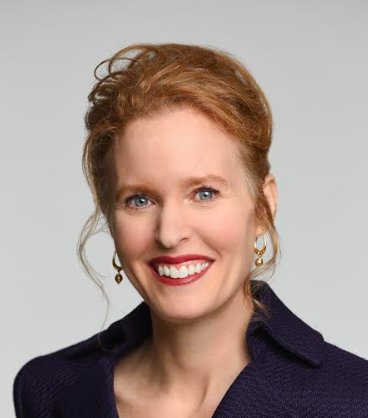
Editor’s note: This is the second post in an ongoing biweekly series on the climate adaptation gap. Stay tuned for future installments here on TriplePundit! In case you missed it, you can read the first post here.
Previously, exploring the chasm between the need by corporations to adapt to climate change and the apparent absence of leadership to do so, I addressed a five-part plan for companies to become climate adaptation leaders. Let’s delve into the first two, offering suggestions to ensure corporate resiliency in a climate-altered world.
Why does this matter? For the past several years, the CDP’s supply-chain survey has revealed that more than 70 percent of corporate respondents envisioned risks to their supply chain from climate disruption. Indeed, these risks are appearing. Thailand’s unprecedented 2011 flooding alone caused $20 billion in economic losses. Honda’s losses alone totaled more than $250 million when flood waters inundated an auto assembly plant. In another climate-related disruption in Mexico, General Motors calculated that a one-month disruption at one of its production facilities there hard hit by drought could spark a $27 million loss in profits.
The secret involves knowing first where your supply chain starts. That’s another kind of gap for many corporations–and one that myriad sustainability surveys and shareholder proxy fights face. But let’s presume that, like a majority of global corporations, you are getting a handle on your supply-chain geography to examine both risks and opportunities for your bottom line.
That’s the first step of addressing your climate adaptation gap: Examine the relative risks of geographies in your supply chains.
Many tools are available for corporate and development decision makers to help plan and devise their business strategies. Corporate leaders tell me they use the Consumer Confidence Index, Corruption Perceptions Index and Human Development Index, among other well-regarded tools, to help relay complex information quickly to their boards of directors and C-suite peers.
Some global corporations maintain tools themselves. MWH Global, an early employer of mine and a leader in hydropower development worldwide, including in the least-developed countries, developed an internal risk-management schema that helped it consider the hardship to employees working in less-stable countries.
The ND-Global Adaptation Index, or ND-GAIN, is another business barometer that provides quick insights into a country’s climate vulnerability and readiness to adapt. And since risk experts rank climate change among the principal threats to business, the tool serves as a timely resource for strategic planning.
Free and open-source, ND-GAIN illuminates the countries best prepared to deal with global changes sparked by overcrowding, resource constraints and climate disruption. This index uses 17 years of data to rank over 175 countries annually against 50 variables, based on how vulnerable they are to droughts, super-storms and other natural disasters and, uniquely, how ready they are to employ adaptation solutions.
To generate actionable information about country-level vulnerabilities from climate change and the readiness of countries to absorb and use new investments, you can examine a cross-section of the data most germane to your supply chain by looking at three things:
- The ND-GAIN ranking (pictured right and above), which orders every country by aggregating all measured factors into a single score. It allows a quick look at combined vulnerability and readiness. View the full rankings to find your countries within the index and compare their ND-GAIN ranking with one another.
Using ND-GAIN’s Matrix, you can draw lessons from existing disruptions to your supply chain due to extreme events or predict future problems. Assessing the realities of climate change on your supply chain, you can look at the relative vulnerability by country of origin of your major suppliers – Taking, for instance, four countries important for the auto industry: China Japan, Korea and Mexico. As of 2011, Japan and Korea possessed a similar level of readiness, and Mexico and Japan’s vulnerability matched, but China was the least prepared and most vulnerable of all of them. (Check out the vulnerability/readiness matrix here to compare countries.)
- The ND-GAIN Country Profiles (pictured right) provide all of the data and their sources, organized by specific vulnerability and readiness measures such as water availability, food security and education level. These country profiles for the 175 countries in the index help you to identify relevant vulnerabilities in geographies where you maintain significant human and capital assets.
What’s vital about these country profiles is that they give the private sector the means to gauge adaptation-related opportunities and risks in developing countries. With this ability, the private sector can address the critical needs of vulnerable populations (and identify new markets well-suited to their business model, products or services and investment-risk profiles).
The profiles also help policymakers identify the easiest-to-achieve avenues – that proverbial low-hanging fruit – for improving rapidly a country’s investment attractiveness to the private sector as well as to motivate and create incentives to employ the best public policies.
Graphics courtesy of the ND-Global Adaptation Index
Read more in the Climate Adaptation Gap series:
- Bridging the Climate Adaptation Gap: From Recognition to Action
- Bridging the Climate Adaptation Gap: Relative Risks of Geographies in Supply Chains
- The Climate Adaptation Gap: How to Create a Climate Adaptation Plan

Joyce Coffee, LEED AP, is founder and President of Climate Resilience Consulting. She is an accomplished organizational strategist and visionary leader with over 25 years of domestic and international experience in the corporate, government and non-profit sectors implementing resilience and sustainability strategies, management systems, performance measurement, partnerships, benchmarking and reporting.














